Cannabis vegetative stage how-to guide
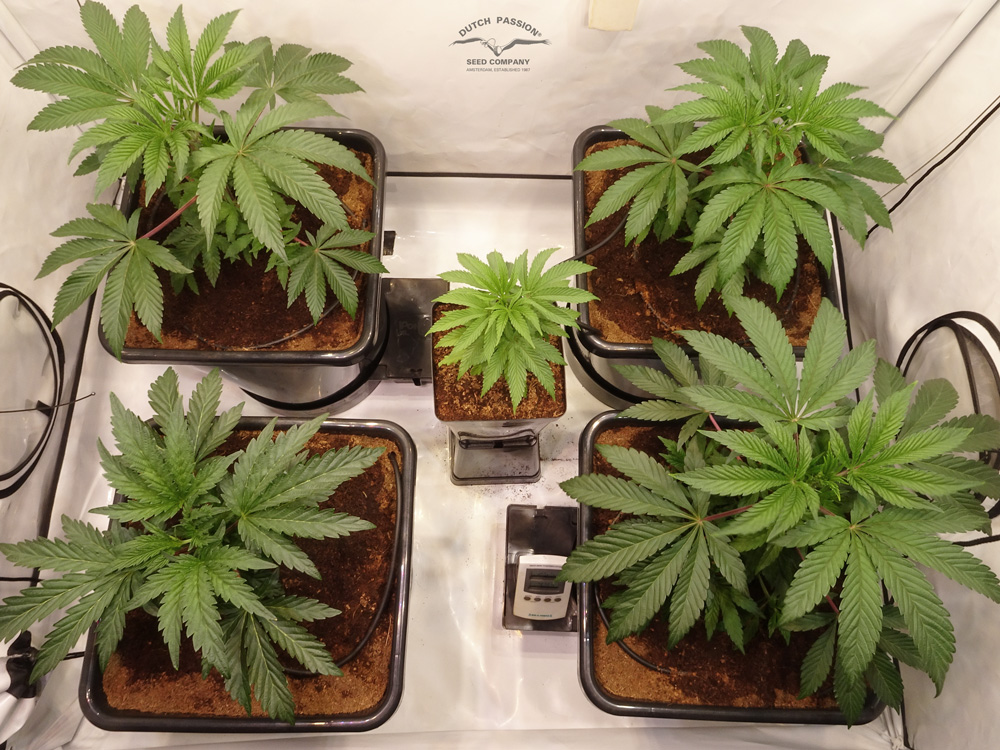
The cannabis vegetative stage (sometimes called the growth stage) takes place after germination and before flowering. After germination your cannabis seedlings will produce an initial pair of rounded cotyledon leaves. In the following weeks the plants will start to mature and produce traditionally shaped leaves (‘fan leaves’), this is known as the cannabis vegetative stage. These gather light energy and allow photosynthesis, enabling the plant to grow and develop.
What does the cannabis veg stage refer to?
During vegetative growth, cannabis produces leaves, branches and roots but no buds. Some people refer to this as the cannabis veg stage. When growing photoperiod feminised cannabis seeds indoors you can dictate the length of the cannabis vegetative stage simply by maintaining 18+ hours of daily light. If you grow photoperiod feminised seeds outdoors, the length of the day determines when the plant starts to bloom. When growing autoflower seeds (indoors or outdoors) it’s the age of the plant that determines when flowering begins.
Cannabis veg time is a period when the plant prepares for eventual bloom. If you keep your plant healthy and provide the best veg nutrients for cannabis you can grow a large plant which should produce a heavy bloom/harvest. Conversely, a short veg time tends to produce small plants which will often yield less than a larger plant. Longer vegetative growth is associated with a larger final plant size and heavier yields.
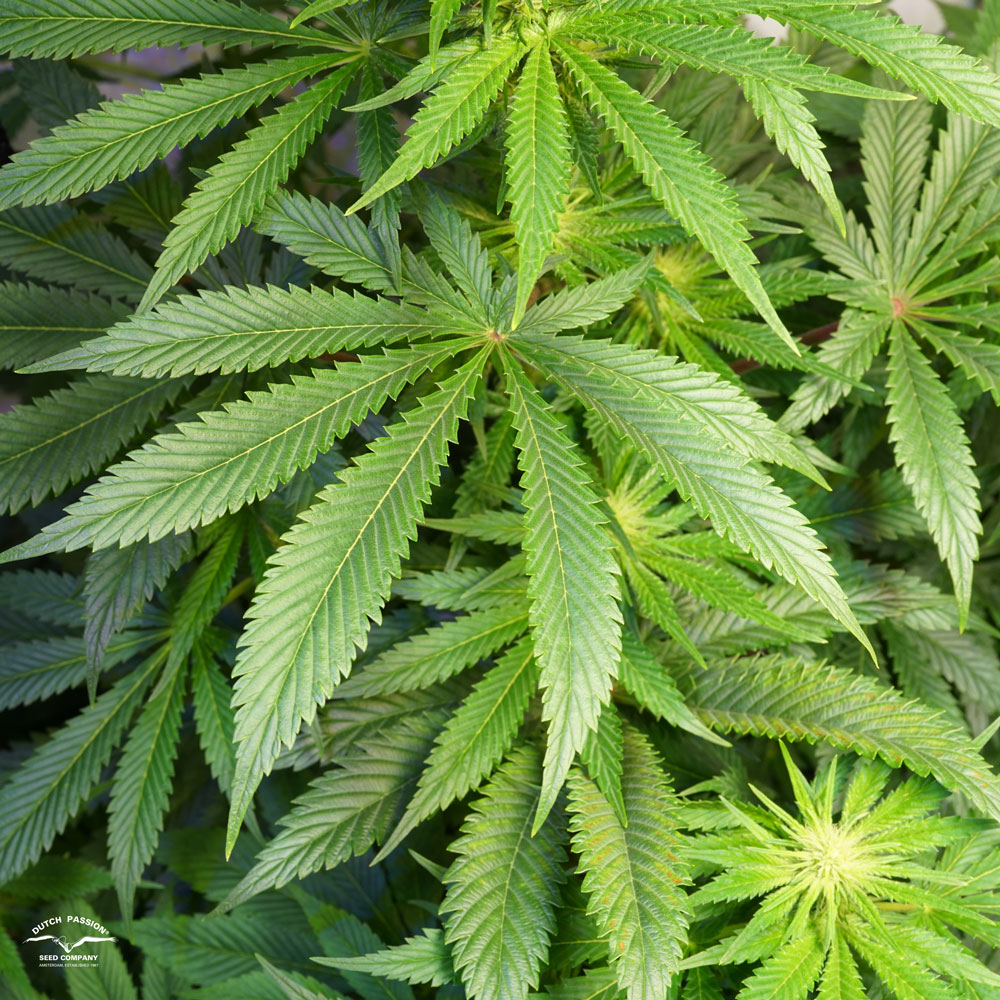
Basic tips on vegetative cannabis plants
During the cannabis vegetative stage the plant will do best with a Nitrogen rich grow medium or nutrient mix. The best cannabis cultivators are able to keep their plants in the nutrient sweet spot throughout the vegetative growth stage. This means that the plants are neither over-fed nor under-fed, both of which can slow or even permanently stunt growth.
Plants should be monitored to ensure they are free of pests and disease. Light levels should be monitored and slowly increased as the plants grow and approach bloom. Temperatures and general environmental conditions should be kept as stable as possible. When all these parameters are maintained at optimum levels you will enjoy seeing your plants develop healthily during the cannabis vegetative stage.
Cannabis smell during veg tends to be light. At this early stage of growth, terpene production is minimal and the powerful aroma associated with cannabis tends to build as harvest approaches.
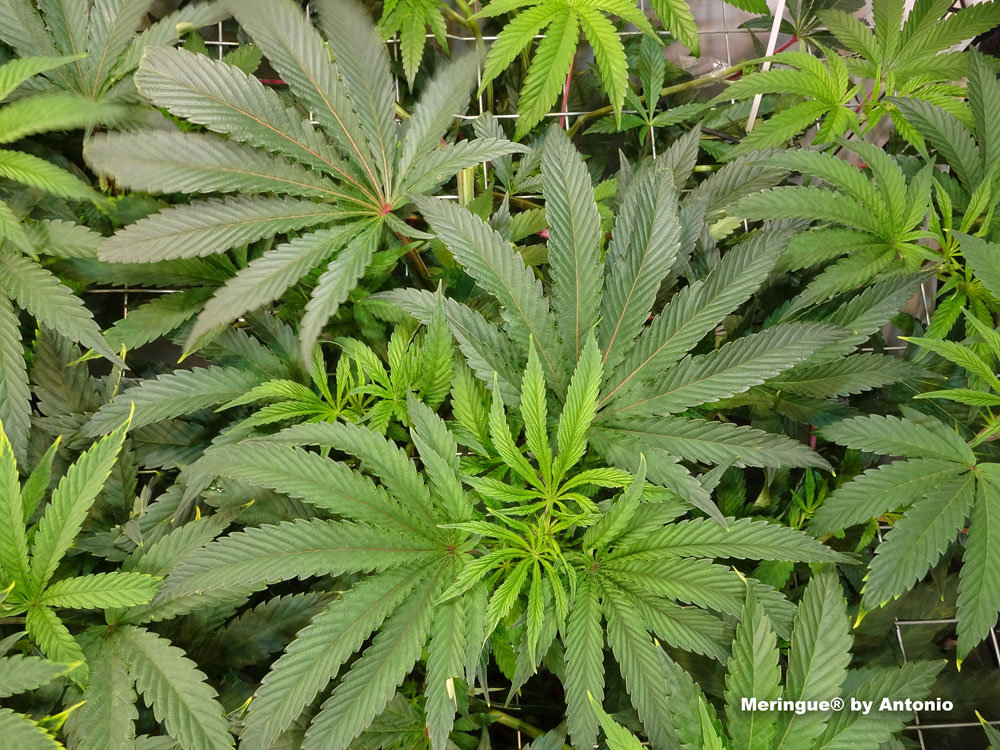
How much water do cannabis in veg need?
Usually plants in the cannabis vegetative stage need little water initially. With few leaves, a young cannabis plant in veg has low transpiration rates and low root demand for moisture. One of the more common mistakes, especially by less experienced cannabis growers, is to over water (and/or over feed) their plants.
The effect of this is to leave the cannabis roots struggling to develop in waterlogged and poorly oxygenated soil. This slows down growth. Some growers use moisture meters (e.g. Blumat hygrometers) which will give them an accurate soil moisture reading and remove the guesswork.
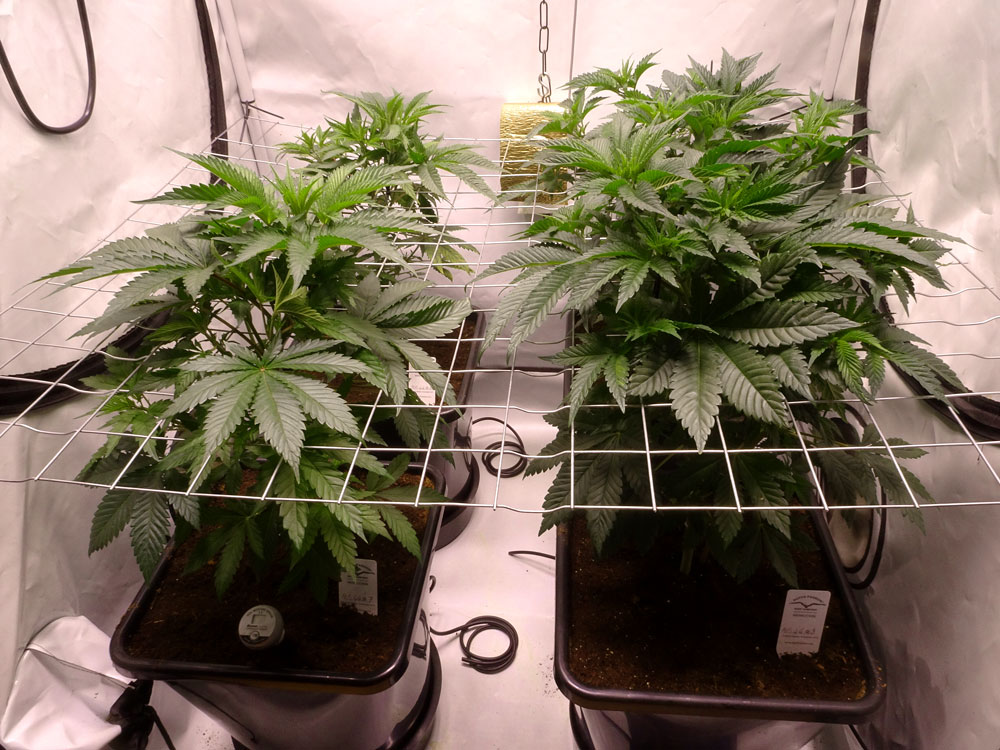
What kind of nutrients are best for vegetative cannabis?
The best nutrients for vegetative cannabis are Nitrogen rich. This allows growth of stems, branches and leaves. It’s important to add that one of the most frequent mistakes during the cannabis vegetative stage is over-feeding the plants. The young, delicate plant biochemistry simply isn’t able to cope with high levels of nutrition.
Far from helping the plant, excess nutrients in the veg stage can cause temporary or even permanent damage to future growth and yields.
How often do you feed nutrients in vegetative state?
The answer depends on your grow style/method. If you are growing organically in soil with slow release organic nutrients (BioTabs are particularly easy to use and highly recommended) then you may not need to add any extra nutrients in the veg stage. In fact, you may not need to add any nutrients at all other than a light top dressing of general purpose bloom nutrients later on. But if you are growing in hydroponics the plants are completely dependent on you to deliver light veg nutrients from the beginning.
What is the ideal temperature / humidity for the vegetative stage?
What’s the best cannabis veg average temp and humidity? Many growers aim for steady grow room temperatures of around 23-25ºC (73-77ºF) in veg growth during lights on. Perhaps a couple of degrees cooler during lights out. Humidity levels can be high during veg, and this may even help the plant absorb/retain moisture when the root system isn’t fully developed. A relative humidity (‘RH’) of 60-70% or more in the veg stage won’t cause any issues. However, during subsequent bloom, %RH needs to be reduced in order to avoid mold/bud rot especially in the later stages of flowering.
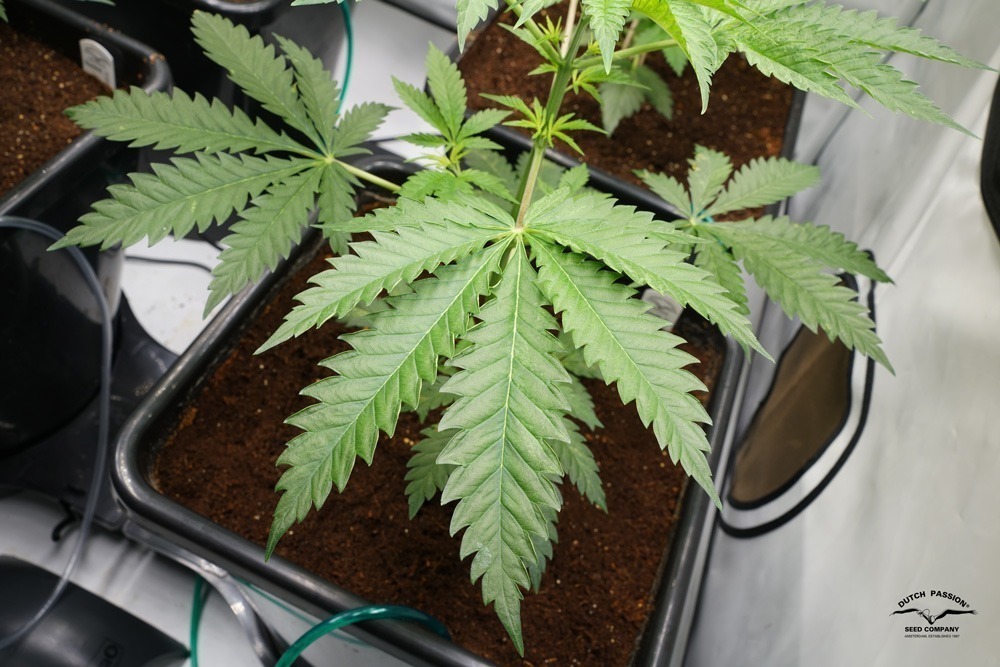
How much light should cannabis plants receive in veg?
Many people measure light intensity in PPFD (photosynthetic photon flux density). This complicated-sounding term is measured in units of micromoles per square meter per second (μmol/m2/s). Don’t worry if that sounds complicated. Most grow light manufacturers should have recommended hanging heights for your plants at various stages of their life cycle and will be able to give PPFD readings for their lights.
PPFD levels of 200-400 are good for seedlings. As the plant gets larger it is able to cope with gradually more powerful light. In the cannabis vegetative stage PPFD levels from 400-600 are often used. Note that the most powerful light levels are used in flowering, when PPFD levels of 600-900 are often used.
A good cannabis indoor veg light cycle for feminised seeds uses around 18-20 hours of daily light, though some growers use 24 hours of daily light. The best cannabis vegetative light should provide gentle (400-600 PPFD) rather than intense light levels.

Can I veg cannabis with fluorescent lights?
Yes, and you can expect good results especially if you use high wattage compact fluorescent grow lights with sufficient PPFD light intensity at the canopy level. Many growers also use fluorescent light for seedlings. Note that plants, especially in later veg growth, will start to need more intense light levels. At that point many growers that have been using fluorescent lights may opt for something with more power, such as LED.
What’s the best veg light for cannabis?
Several options work well. Some growers use fluorescent lights, such as compact fluorescent fixtures. Others use LED grow lights. The cheapest lights are often HPS/MH lights. In general, LED lights are regarded as the most efficient and longest lasting. LED is used by many professional growers, preferred for the higher cannabinoid levels produced vs HPS/MH.
It’s worth explaining more about the differences between MH (Metal Halide) and HPS (High Pressure Sodium) lights. The lights work on similar principles, specifically creating an electric arc through a gaseous mixture which then emits light. MH lights are cheap and powerful with a high blue content to the light. This ensures the nodes remain close together and don’t stretch as much as they would with an HPS light. For this reason, MH lights are often preferred over HPS in vegetative growth.
Ceramic Metal Halide (‘CMH’) lights are another option. They are efficient and can be equipped with blue dominant lamps (for vegetative growth) or red dominant lamps (for bloom).
What colour of the light spectrum do cannabis plants like during the vegetative growth phase?
In all cases the best cannabis veg light spectrum tends to be rich in blue wavelengths. These allow good veg growth. Later on in bloom, your plant will benefit from plenty of red wavelengths alongside orange, yellow and green. Red light is also useful for veg growth but can induce stretch. Blue light also increases leaf/branch structure and encourages the plants to have more compact/bushy growth in general.
Many modern growers use white spectrum LED grow lights. These deliver great results for veg growth and also have a pleasant and comfortable natural spectrum which is easy for your eyes to work in.
When to prune, top and trim cannabis in veg?
Pruning or trimming cannabis plants during veg is possible though not all growers do it. Removal of leaves isn’t generally recommended for young plants. That’s because leaves are solar panels, collecting light and helping power future growth. But as the plant gets larger, many growers like to remove leaves which block light to lower potential bud sites. The logic is that the overall yield will ultimately benefit.
How to trim cannabis plants in veg? Some growers will remove lower branches/leaves (‘lollypop’ plant structure) allowing the plant to focus it’s energy and development on the main upper buds/blooms. Much depends on the personal grow style of the grower.
One other option is called ‘topping’ the cannabis plant. Topping cannabis plants during veg is the process of removing the growing tip of the plant once 4 or 5 nodes (leaf sets) are present. This encourages lateral side growth, producing a bushier and shorter plant. Many growers feel that yields are increased with topping.
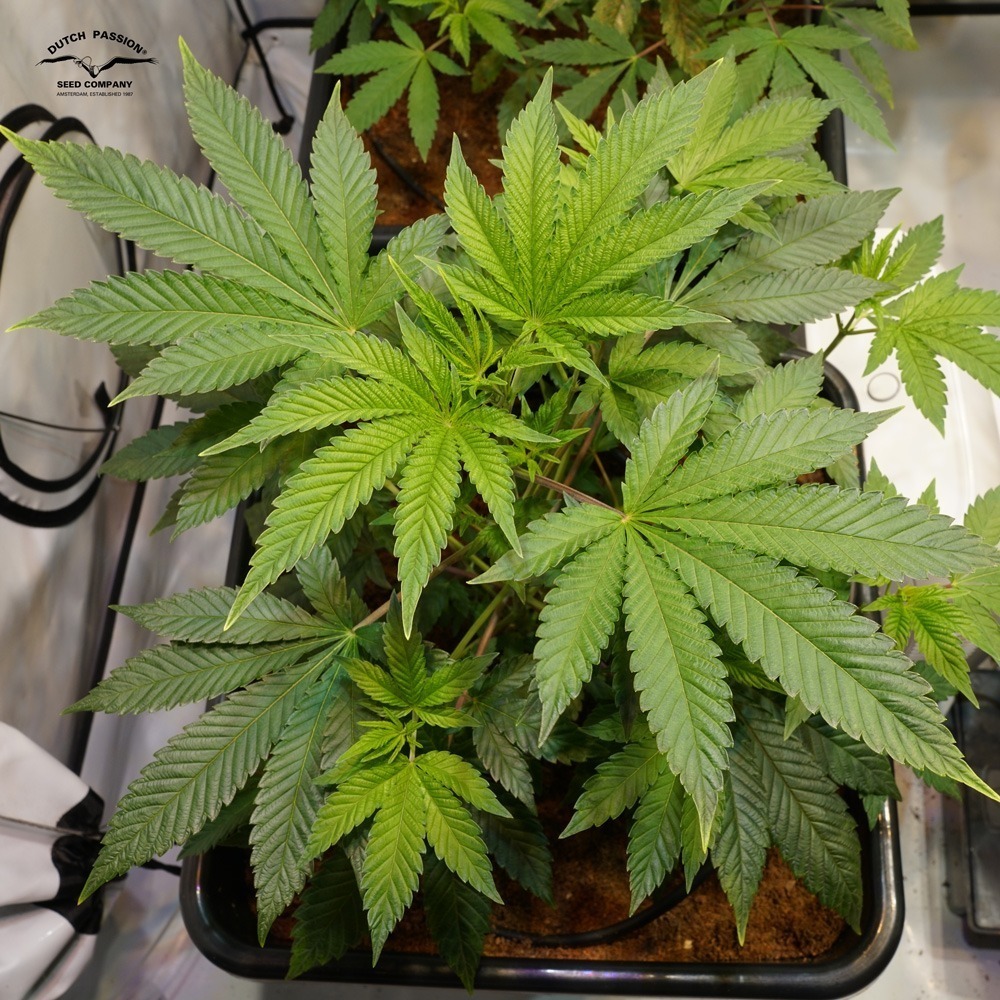
How long does the cannabis vegetative stage last?
How long should a cannabis plant be in the vegetative stage? It depends on the type of cannabis seeds you are growing as well as how you are growing them.
If growing autoflowering seeds, the cannabis vegetative stage tends to last for the first 5 weeks or so. After that, the autoflower genetics initiate the cannabis bloom stage. There is little that you can do to control the cannabis vegetative stage with autoflower seeds. They, not you, determine when to start bloom.
When growing photoperiod feminised seeds outdoors, changes to daylight hours cause the plants to begin bloom. This happens as your outdoor plants sense the reduced daylight hours, prompting hormonal changes which initiate the flowering process.
However, if you are growing photo dependent feminised seeds indoors, you have full control over the cannabis vegetative stage. By maintaining ‘long’ daylight hours of 18+ per day your plants remain in the veg growth stage. If you are growing with the SOG method (sea of green) you can use a short veg stage.
Related:
Growing cannabis with the SOG method (sea of green)
If you grow cannabis with the SCROG method (screen of green) you will need to maintain a long cannabis vegetative stage to allow your plant to fill the screen. How long to veg cannabis indoors with SCROG? Some SCROG growers use veg periods of 10-15 weeks.
Related:
Growing cannabis with the SCROG method (screen of green)
How to tell if your plant is ready for the flowering stage?
How long to veg cannabis? Many growers germinate their cannabis seeds and use a cannabis vegetative stage of around 4-6 weeks when growing photoperiod feminised seeds indoors.
However, much depends on your personal grow style and cultivation method. SOG growers will use perhaps just 1-2 weeks of veg growth. Some will even germinate their cannabis seeds and immediately introduce them into a 12/12 light schedule. SCROG growers may prefer nearer 10 weeks of veg stage.
A longer veg period often equates to a larger final plant. If you have a small grow room you may prefer to use shorter veg periods.
Related:
SOG vs SCROG cannabis growing. Which is best for you?
Cannabis vegetative stage most common problems
With the correct up-front planning and optimised grow room conditions, hopefully you won’t see many problems during the cannabis vegetative stage. Here are some of the more common issues you may encounter.
Cannabis plant showing ovary/sex in veg
Why is my cannabis plant showing sex (pre-flowers/ovary) in the vegetative stage? At the nodes of the cannabis plant (where the stem and branches meet) you may see pre-flowers even in the veg stage before bloom has begun. It’s not uncommon to notice pre-flowers, especially after your plant has had 4 (or more) weeks in the veg stage.
The pre-flowers look similar to miniature versions of the adult flowers. Female pre-flowers may produce a couple of white hairs (pistils). Male pre-flowers look like a small ball on a stick. If the female calyx is left un-pollinated it grows into a resinous bud. But if pollinated, the calyx effectively becomes an ovary and grows a cannabis seed inside
Cannabis plant starting to bloom in veg stage
Occasionally you may find your indoor plants will start to show bloom characteristics even though it is on a veg light cycle. Autoflowers, of course, will always ‘automatically’ start bloom whenever the genetics decide. But even photoperiod feminised strains may also show this feature.
This can be more common with plants that have been given a prolonged period of many weeks of veg growth. There is little that can be done if your plant reaches the point where it wants to start blooming, and it may be easier to adopt a 12/12 bloom light cycle. This allows your plant to do precisely what it is preparing to do anyway.
‘Fast’ cannabis genetics, such as Dutch Passion Think Fast seeds are photoperiod genetics which also possess recessive autoflowering genes in their DNA. Although these strains shouldn’t be autoflowering, the occasional plant could show early sex and begin flowering early.
Cannabis leaves drooping in veg stage
Drooping leaves can be a sign of over watering. This is a common error from less experienced growers. Use of a hygrometer (moisture meter) can be a good way to avoid overwatering. Wilting leaves may be a sign of under watering. This looks different to overwatered drooping leaves, but again, a hygrometer is useful. Especially for new growers.
Cannabis plant turning light green
Leaves losing some of their usual green appearance may be a sign that there is a problem with fertiliser for cannabis vegetative growth. Light green or yellow leaves on cannabis plants during veg could indicate insufficient Nitrogen. How much nitrogen is good for the veg stage of cannabis? Nitrogen is essential for healthy growth during the veg stage. Many veg nutrients contain a higher ratio of Nitrogen in their N:P:K ratios than they would in bloom. In bloom, Nitrogen content is reduced and greater levels of Phosphorus (‘P’) and Potassium (‘K’) are provided. The specific ratios of NPK used in veg vs bloom nutrients varies from supplier to supplier.
One other cause of leaves turning a light green is if they are overloaded with light.

Slower plant growth than usual in veg stage
Some cannabis genetics may grow slower than others during veg. Certain indica strains, such as Bubba Island Kush, will remain short and compact even after a long veg stage. Slow growth doesn’t necessarily indicate a problem. However, slow growth could also be a sign of low temperatures, waterlogged roots or some other sub-optimised environmental condition.
What to do if you lose track of the light cycle?
Occasionally, indoor growers have a problem with the timer which controls the time the lights switch on and off. Don’t worry too much about it. Just re-set conditions with a new timer and the plants will adapt within a few days.
Enjoy watching your plants develop in the cannabis veg stage!
Seeing your plants transition from seedlings through the cannabis veg stage is a satisfying time for any grower. It’s also a rewarding time, as your plant gets larger and excitement mounts about the eventual transition to bloom. Whether you grow autoflower or feminised seeds you can expect an enjoyable phase of your plants growth, enjoy!


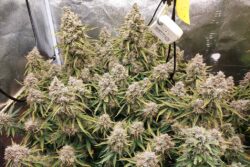






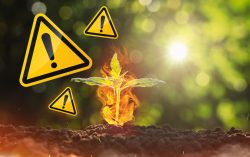





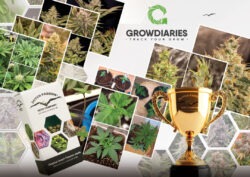


1 Comment. Leave new
Yes I’ve been a grower for over about 16 years and I watch this and read every bit of it and it’s very educational but as I mentioned I already knew a lot of it but it was really great being refreshed on it so again thanks a lot